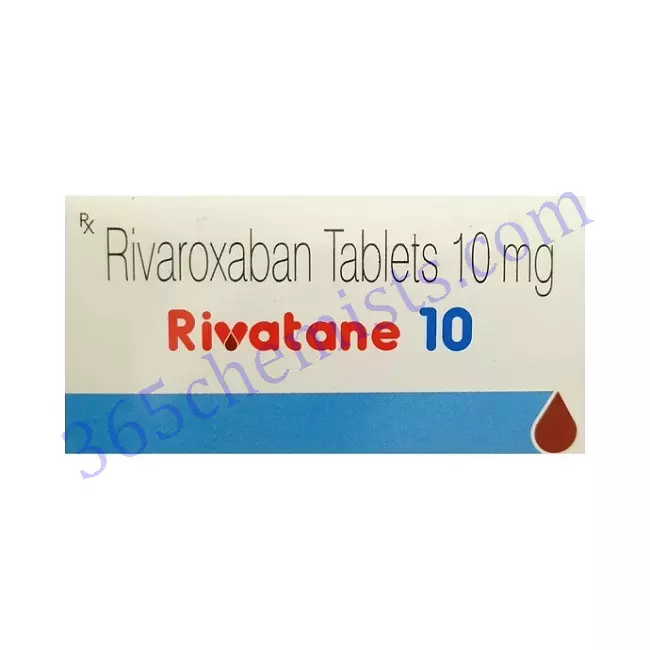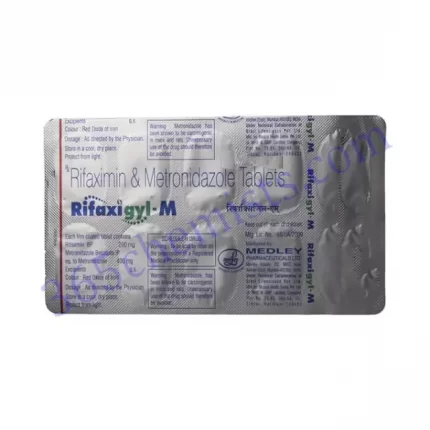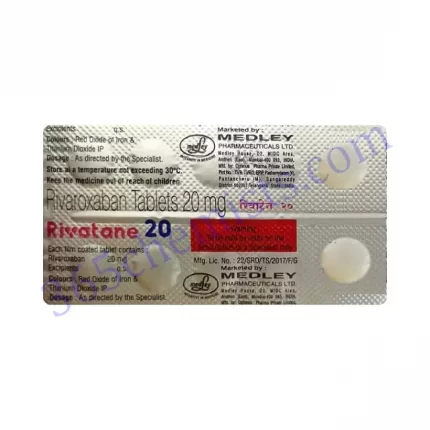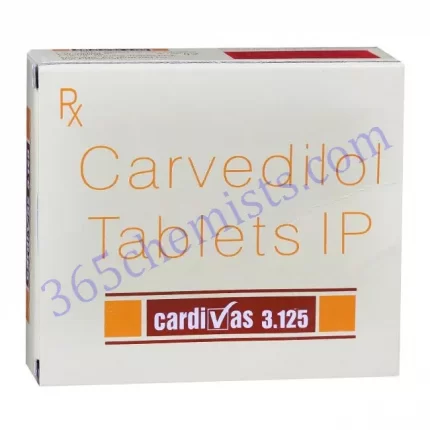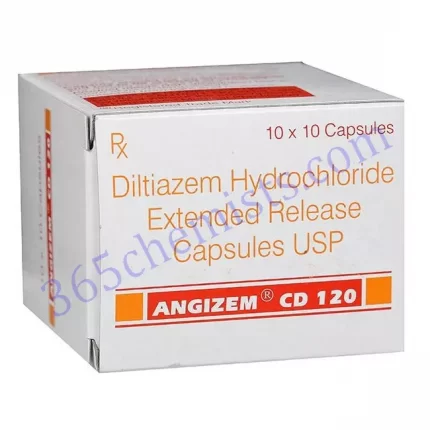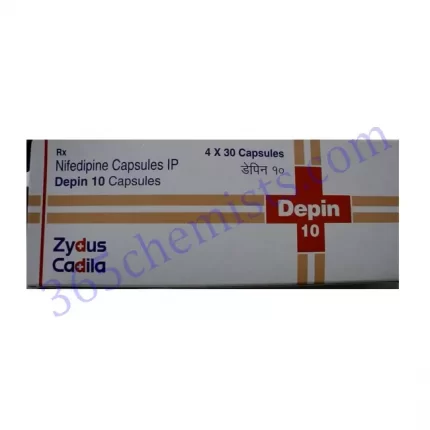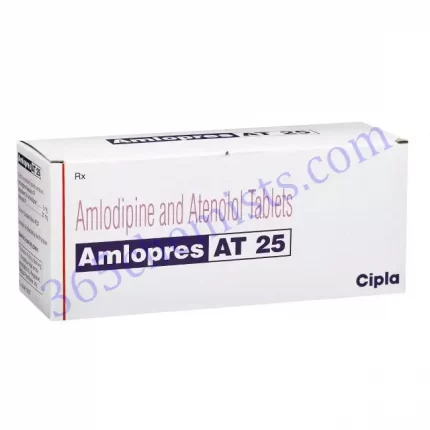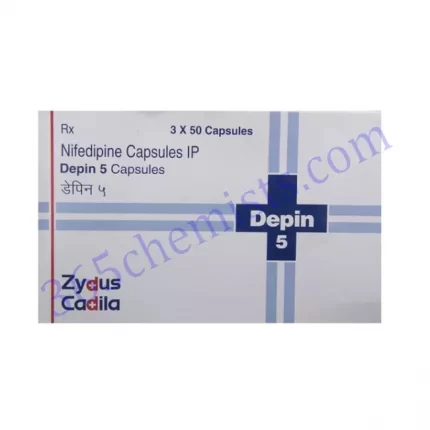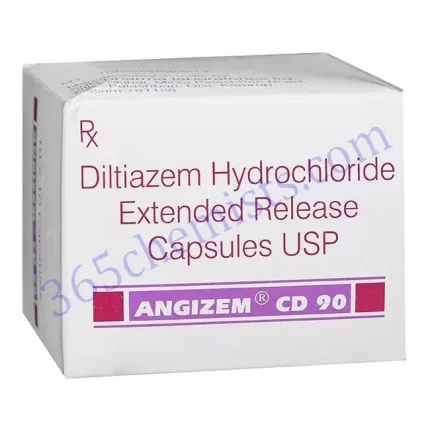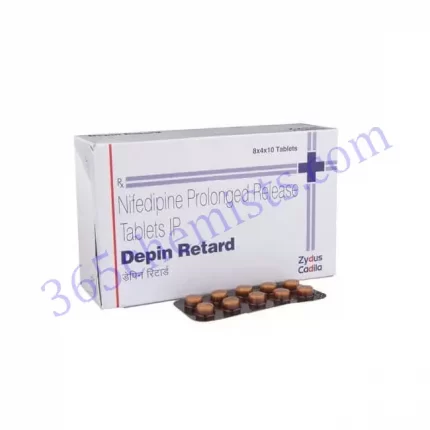Rivatane 10mg Tablet (Rivaroxaban 10mg): Effective Anticoagulant for Thromboembolic Disorders
A medication known as rivatane 10 mg tablet, which contains the active component rivaroxaban, is available. It is primarily employed for the purpose of both thromboembolic disorder prevention and treatment, and it is classified as a member of the group of drugs known as direct oral anticoagulants (DOACs). This in-depth guide offers important information regarding the Rivatane 10mg tablet, such as its mode of action, indications, dosage, potential adverse effects, and more.
How Rivatane Works
A key blood clotting factor known as Factor Xa is inhibited during the course of treatment with a rivatane 10 mg tablet. Rivaroxaban prevents the formation of blood clots and reduces the risk of thromboembolic events such as deep vein thrombosis (DVT), pulmonary embolism (PE), and stroke by inhibiting the activity of Factor Xa.
Indications for Use
Tablets of rivatene 10 mg are recommended for use in the treatment of the following conditions:
- Deep Vein Thrombosis (DVT) and Pulmonary Embolism (PE) Prevention: It is prescribed to patients who are going to undergo orthopaedic surgery, such as knee or hip replacement surgery, in order to prevent deep vein thrombosis (DVT) and pulmonary embolism (PE).
- Treatment of Deep Vein Thrombosis and Pulmonary Embolism: The Rivatane 10mg tablet is also used for the treatment of deep vein thrombosis (DVT) and pulmonary embolism (PE) to reduce the risk of complications and prevent recurrence.
- Reduced Risk of Stroke and Systemic Embolism in Patients Suffering from Nonvalvular Atrial Fibrillation Patients who suffer from nonvalvular atrial fibrillation, a heart rhythm disorder, may be prescribed this medication to lower their risk of suffering a stroke and systemic embolism.
Dosage and Administration
A healthcare professional should determine the appropriate dosage of the Rivatane 10 mg tablet for the individual based on the individual’s condition, risk factors, and any other medications that are being taken at the same time. Oral administration once daily, either with or without food, is the typical method of administration. For the best possible outcomes, it is essential to administer the medication in accordance with the recommended dosage and timetable.
Related Product
Rivatane 10mg Tablet
Rivatane 20mg Tablet
Warnings and Precautions
- Rivaroxaban, the active component in the Rivatane 10 mg tablet, is associated with an increased risk of bleeding. Patients who are bleeding disorders, have ulcers, have recently undergone surgery, or are taking other medications that increase the risk of bleeding should use extreme caution when taking this medication.
- The liver is responsible for metabolising rivaroxaban, while the kidneys are responsible for excreting it from the body. Patients who have impairments in their liver or kidneys should only use it with extreme caution. During treatment, it is necessary to monitor the function of the liver and kidneys very closely.
- Rivaroxaban should not be used in patients undergoing spinal or epidural anaesthesia or puncture because it may increase the risk of spinal or epidural hematoma, which can result in long-term or permanent paralysis. Patients who are undergoing spinal or epidural anaesthesia or puncture should not take rivaroxaban.
Related Product
Risdone 2mg Tablet
Risdone 3mg Tablet
Risdone 4mg Tablet
Risdone 1mg Liquid
Risdone LS Tablet
Risdone Plus Tablet
Risdone MT 1mg Tablet
Risdone MT 0.5mg Tablet
Risdone Forte Tablet
Possible Side Effects
The rivatane 10 mg tablet could potentially cause adverse effects in some people. Some examples of common adverse effects include:
The most common adverse effect of rivaroxaban is bleeding, which can occur at any time during treatment. It can show up as nosebleeds, bleeding gums, bruising, or prolonged bleeding from cuts or wounds. It can also cause bruising.
- Nausea or upset stomach
- Headache
- Feelings of weariness or fatigue
- Symptoms such as lightheadedness or dizziness
If you notice any signs of serious bleeding, such as blood coming up when you cough, blood in your urine or stool, or unusual bleeding, it is imperative that you seek immediate medical attention.
Drug Interactions
It is imperative that you inform your healthcare provider about any and all medications you are currently taking prior to beginning treatment with Rivatane 10mg tablet. Rivaroxaban may have an interaction with other medications, which could reduce its effectiveness or raise the patient’s risk of bleeding. Some examples of common drug interactions are as follows:
- Anticoagulants and antiplatelet Medication: Using additional anticoagulants or antiplatelet medication at the same time as your current treatment could raise your risk of bleeding. It is possible that close monitoring and adjustments to the dosage will be required.
- Aspirin and Nonsteroidal Anti-Inflammatory Drugs (NSAIDs) Both aspirin and nonsteroidal anti-inflammatory drugs (NSAIDs) may increase the risk of bleeding when combined with rivaroxaban. Caution is strongly recommended, and the combination ought to be utilised with extreme care.
- Certain Antibiotics and Antifungal Medications There is a possibility that rivaroxaban will interact with certain antibiotics and antifungal medications, which could have an effect on the metabolism and effectiveness of rivaroxaban. It’s possible that the dosage will need to be adjusted.
If you want to make sure that you are using the Rivatane 10mg tablet in a way that is both safe and effective, it is imperative that you discuss any potential drug interactions with your healthcare provider.
Patient Counseling
Patients who are taking a Rivatane 10 mg tablet should be made aware of the following information:
- Compliance with Treatment: In order to achieve the best possible results from treatment, it is essential to take the medication at the prescribed dosage and on the schedule that was provided. It is important that you speak with a medical professional before discontinuing use of the medication.
- Precautions to Avoid Bleeding Because of the increased risk of bleeding, patients should be informed about the warning signs of bleeding and instructed to seek immediate medical attention in the event that they experience any bleeding or symptoms that are not typical.
- Follow-Up Visits It is essential to schedule regular follow-up visits with a healthcare professional in order to monitor the patient’s response to treatment, make any necessary adjustments to the dosage, and address any concerns or side effects that may arise.
- Rivatane 10 mg tablets are not recommended for use during pregnancy or while breastfeeding due to the potential for adverse effects. It is essential to have a conversation about the dangers and advantages with a trained medical professional.
Conclusion
The Rivatane 10 mg tablet, which contains the anticoagulant rivaroxaban, is an effective anticoagulant medication that is used for the treatment as well as the prevention of thromboembolic disorders. It does this by inhibiting the clotting factor known as factor Xa, which helps to prevent the formation of blood clots and lowers the risk of serious complications. It is absolutely necessary, in order to achieve the best possible results from treatment, to take the medication exactly as directed, to schedule regular checkups, and to keep an open line of communication with a medical professional. The rivatane 10 mg tablet is an important treatment option for the management of thromboembolic disorders. This option helps improve the quality of life for people who are at risk of complications related to blood clots.

